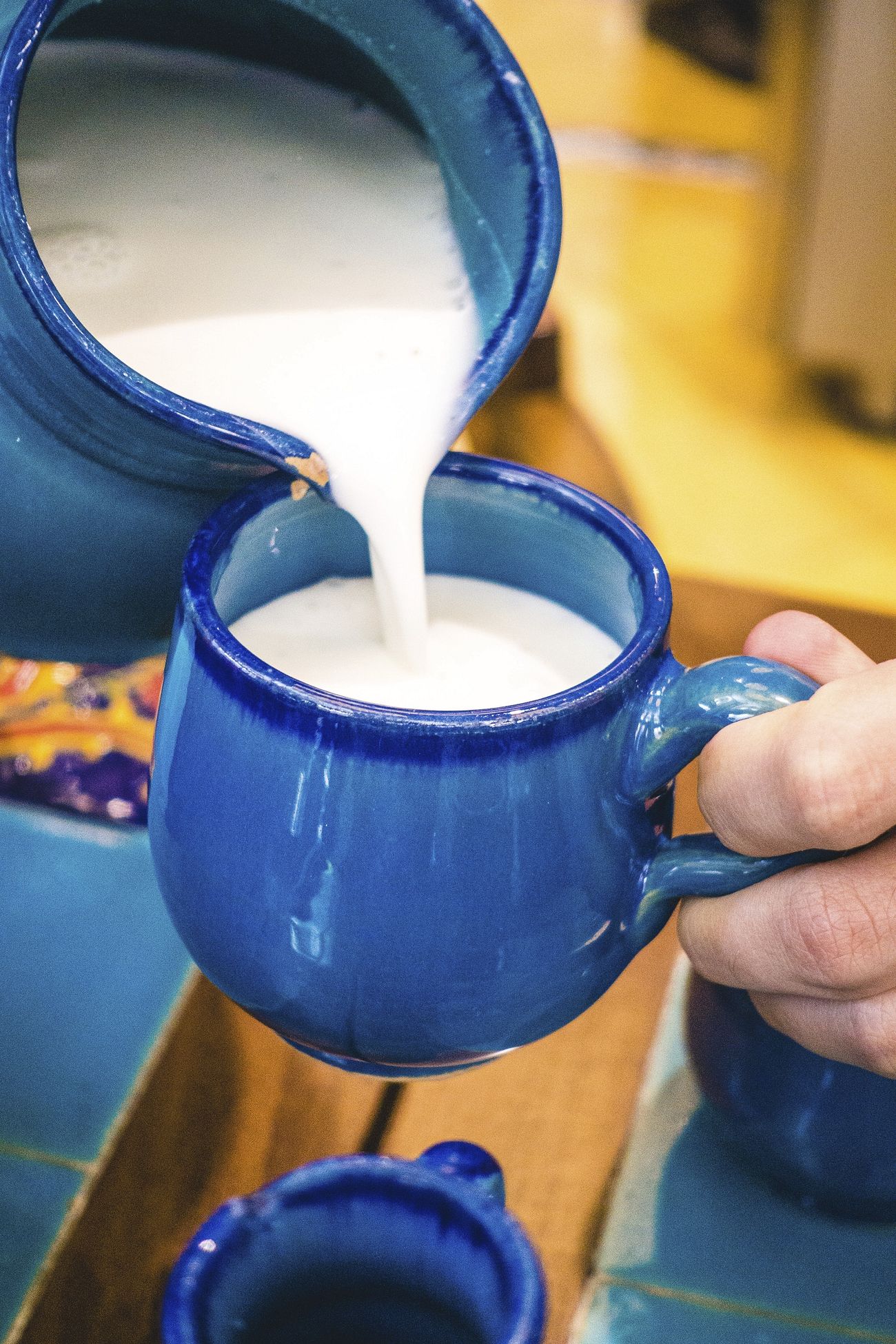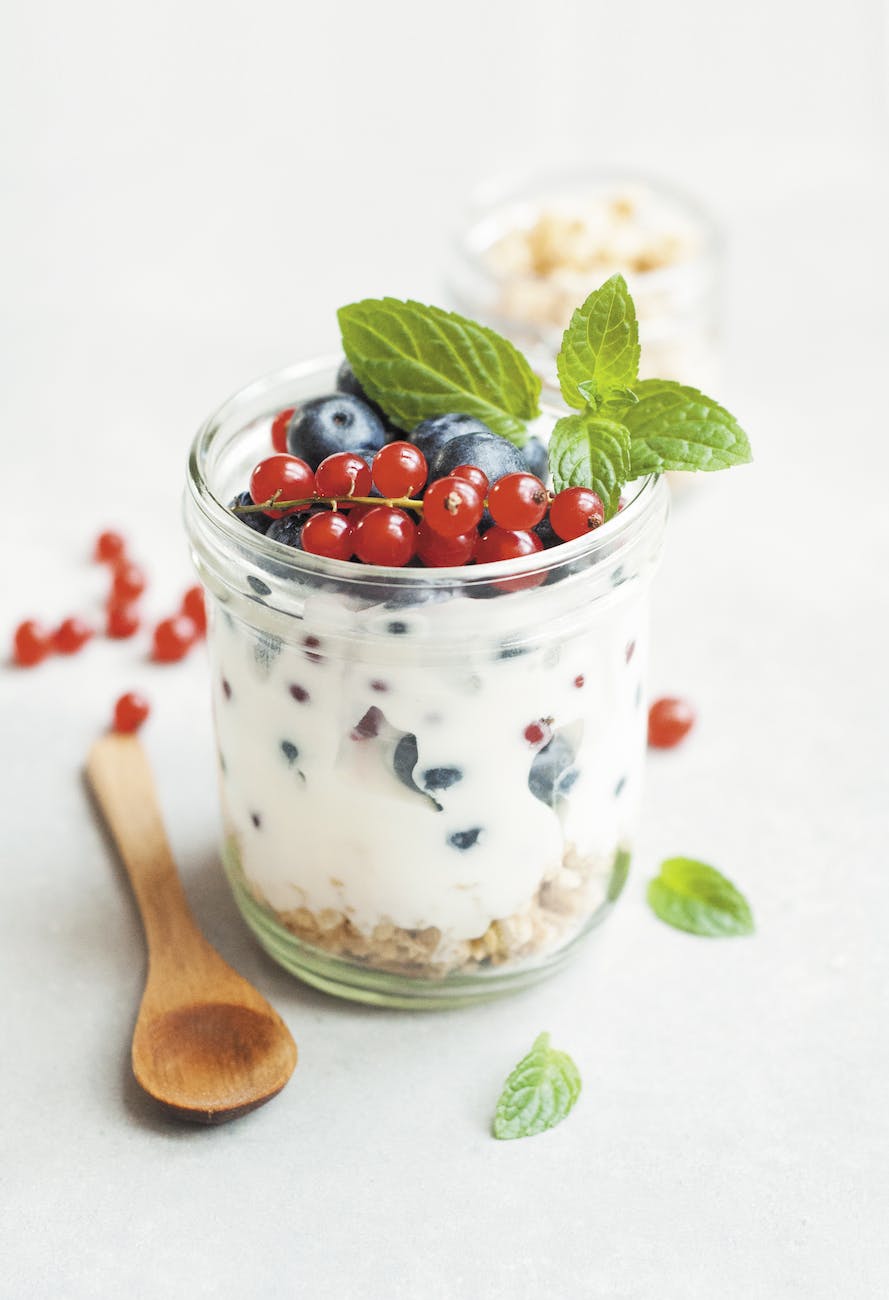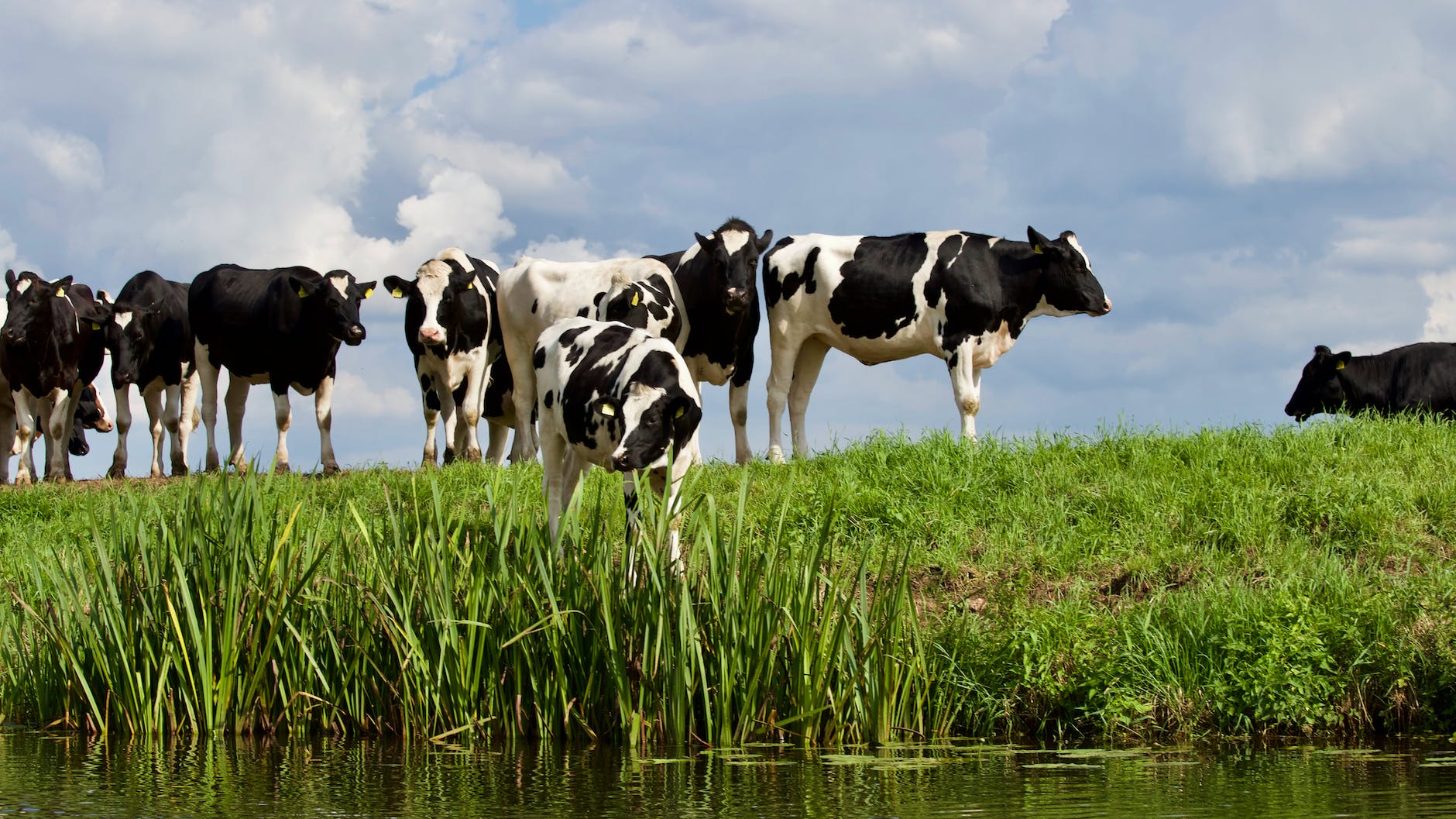
This month we’ve featured fermented goods in a big way – this is the third and final post to showcase the diversity of fermented foods across the world. This article is about dairy products, where we feature a couple of examples in detail. To start with, here are some unusual and different fermented dairy products from around the world:
- Skyr: A traditional Icelandic dairy product that resembles yogurt but has a thicker, creamier consistency. It is made from skim milk and is high in protein.
- Filmjölk: A fermented milk product from Sweden, similar to yogurt but with a thinner consistency. It has a slightly sour taste and is often enjoyed with fruits or muesli.
- Kefir: A fermented milk drink that originated in the Caucasus region. It is made by fermenting milk with kefir grains, which are a combination of bacteria and yeast. Kefir has a tangy taste and a slightly effervescent texture.
- Kumis: A traditional fermented dairy product from Central Asia, particularly popular in Mongolia. It is made from fermented mare’s milk and has a slightly sour and fizzy taste.
- Tarhana: A dried fermented dairy product found in various forms across the Middle East, Central Asia, and Eastern Europe. It is made from a mixture of fermented milk, wheat flour, and vegetables, and is often used to make soups.
- Dadih: A traditional Indonesian fermented buffalo milk product. It is made by coagulating the milk with a local wild grass called “elephantopus,” resulting in a custard-like texture and a tangy flavor.
- Clabber: A traditional Southern United States dairy product made by allowing raw milk to naturally ferment and sour. It has a thick consistency and is often used as a base for cooking or eaten with sweeteners.
- Suutei Tsai: A Mongolian traditional tea made with fermented milk. It is prepared by boiling green tea with milk and allowing it to ferment, resulting in a unique and tangy beverage.
- Amasi: A fermented milk product from Southern Africa, also known as maas. It is similar to yogurt but has a thicker consistency and a slightly sour taste.
- Chal: A fermented dairy product from Iran, particularly in the Gilan and Mazandaran provinces. It is made by fermenting raw cow’s milk and has a thick texture and tangy flavor.

Suutei Tsai, also known as Suutei Tsai, is a traditional Mongolian tea made with milk and served as a popular beverage in Mongolia. It is prepared by boiling green tea with milk, resulting in a unique and distinct flavor.
The name “Suutei Tsai” translates to “milk tea” in Mongolian, reflecting its main ingredients and preparation method. The tea is typically made using a specific type of green tea leaves called “brick tea,” which are pressed into compact blocks and stored for aging before use.
To make Suutei Tsai, the brick tea leaves are first broken into smaller pieces and then boiled in water. The tea is simmered for an extended period to extract the flavors from the leaves fully. During this process, the tea develops a robust and slightly bitter taste.
After the tea is brewed, milk is added to create a creamy and rich texture. The amount of milk used can vary based on personal preference and regional variations. Some recipes call for equal parts tea and milk, while others use a higher ratio of milk to tea.
Suutei Tsai is often sweetened with salt or sometimes with sugar or butter, depending on personal preference. The addition of salt is a unique characteristic of Mongolian milk tea, giving it a slightly savory taste that distinguishes it from other milk teas found in different cultures.
This tea holds significant cultural importance in Mongolia and is commonly consumed throughout the day, particularly during meals or social gatherings. It serves as a warming and comforting beverage in the cold climate of Mongolia and is believed to have various health benefits, including aiding digestion and providing energy.
Suutei Tsai represents the fusion of Mongolian nomadic traditions and the influence of neighboring cultures. It has become an integral part of Mongolian cuisine and cultural identity, offering a distinct and delightful tea-drinking experience.
Clabber is a traditional dairy product that has been consumed for centuries, particularly in rural and farming communities. It is a type of milk that has naturally soured and thickened due to the activity of lactic acid bacteria. Clabber is often associated with Southern United States cuisine, where it has been a staple for generations.
The process of making clabber is relatively simple. Fresh raw milk is left at room temperature for an extended period, typically overnight or up to 24 hours. During this time, naturally occurring bacteria in the milk convert lactose (milk sugar) into lactic acid through the process of fermentation. This fermentation results in the milk thickening and developing a tangy, slightly sour taste.
The texture and consistency of clabber can vary, depending on factors such as the temperature and the specific bacteria present. It can range from a slightly thickened milk to a custard-like consistency. The flavor is typically tart and tangy, similar to yogurt or buttermilk.
Clabber can be consumed as is or used as an ingredient in various dishes. It is often enjoyed as a stand-alone food or served with sweeteners such as honey or sugar. It can also be used as a base for cooking, where it adds a tangy flavor to recipes like pancakes, biscuits, or cornbread.
It’s worth noting that the production of clabber involves raw milk, which may contain harmful bacteria. Therefore, it’s important to ensure the milk comes from a safe and trusted source. In modern times, pasteurized milk is often used to make clabber as a safer alternative.
Clabber represents a traditional and simple form of dairy fermentation, preserving milk while providing a tangy and distinctive flavor. It showcases the natural transformative power of bacteria and demonstrates how simple culinary techniques can create unique and culturally significant foods.


